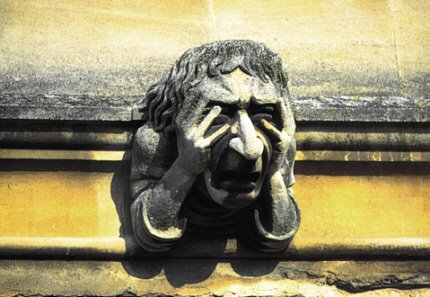City of Vice: London, 1500-1700
 Cultural historians have explored the ways that the city as both as an actual location and imagined landscape was perceived as a dangerous place for women, whose movements beyond the confines of the domestic cast them into an illicit world of material and erotic temptation. But was the city, both real and imagined, also understood to be a place of enticing possibility and anxious negotiation for men? To what extent did full participation in city life in the early modern period necessarily involve an indulgence in immoral or intemperate behavior? We invite essay submissions for a collection focusing on early modern London as a dangerous and alluring environment that influenced male bodies and behaviors variously. Our working premise is that late sixteenth- and early seventeenth-century London was not merely apprehended by male denizens and visitors as a location, but was also experienced as a pervasive force. Urbanization provided the material objects, social opportunities, and topographic sites for unique kinds of pleasures and perils that challenged men’s abilities to maintain the moderation necessary to the ideals of civic manhood. We hope to explore not only the moral and ethical disposition of vice but also the relationship of vice to excess, the affective and the physiological effects of vice, and the relationship between public and private intemperance. Conceiving of vice as both degenerative and constitutive of early modern urban manhood, we aim to consider the ways in which vice is tied to the city within a variety of literary modes (for instance popular satire, drama, ballads, poetry, sermons, and didactic literature), as well as the ways in which representations of vice construct London as a contested terrain of heterogeneous commercial spaces peopled by diverse subjects. We welcome essays from a variety of theoretical and disciplinary perspectives on topics that may include but are not limited to the following:
Cultural historians have explored the ways that the city as both as an actual location and imagined landscape was perceived as a dangerous place for women, whose movements beyond the confines of the domestic cast them into an illicit world of material and erotic temptation. But was the city, both real and imagined, also understood to be a place of enticing possibility and anxious negotiation for men? To what extent did full participation in city life in the early modern period necessarily involve an indulgence in immoral or intemperate behavior? We invite essay submissions for a collection focusing on early modern London as a dangerous and alluring environment that influenced male bodies and behaviors variously. Our working premise is that late sixteenth- and early seventeenth-century London was not merely apprehended by male denizens and visitors as a location, but was also experienced as a pervasive force. Urbanization provided the material objects, social opportunities, and topographic sites for unique kinds of pleasures and perils that challenged men’s abilities to maintain the moderation necessary to the ideals of civic manhood. We hope to explore not only the moral and ethical disposition of vice but also the relationship of vice to excess, the affective and the physiological effects of vice, and the relationship between public and private intemperance. Conceiving of vice as both degenerative and constitutive of early modern urban manhood, we aim to consider the ways in which vice is tied to the city within a variety of literary modes (for instance popular satire, drama, ballads, poetry, sermons, and didactic literature), as well as the ways in which representations of vice construct London as a contested terrain of heterogeneous commercial spaces peopled by diverse subjects. We welcome essays from a variety of theoretical and disciplinary perspectives on topics that may include but are not limited to the following:• Behaviors associated with and/or the symptoms of a specific vice: idleness, rioting, sodomy, wantonness, nightwalking, pandering, gambling, prodigality, drunkenness, gluttony, smoking, sartorial extravagance, and the promotion of social disorder
• Vice and the constitution of the public sphere/specific practices as enabled by particular urban spaces: the street, the court, the tavern, the prison, the church, the playhouse, the bawdy house, the Royal and New Exchanges, the merchants’ stalls, and the docks
• Ascribed causes of vice; inspirations for vice
• State and local regulation of vice
• Vice and material culture; vice and luxury; vice and the market
• Vice and appetite
• Vice and sin; the moral and/or religious register of vice
• Vice and comportment
• Vice as habit and/or vice as impulse
• Vice and age, gender, sexuality, status, ethnicity, race, and religious background
• Vice as defect or disfigurement; vice as deformity or disability
• Vice and aliens, visitors, rural dwellers, and citizens
• Vice and subordination; vice and authority.
• Vice as subversive and/or vice as conservative.
Proposals or abstracts of no more than 500 words should be submitted by March 1, 2007 by email to: roze.hentschell@colostate.edu *and* amanda.bailey@uconn.edu. Completed papers will be due October 1, 2007.


0 Comments:
Post a Comment
<< Home